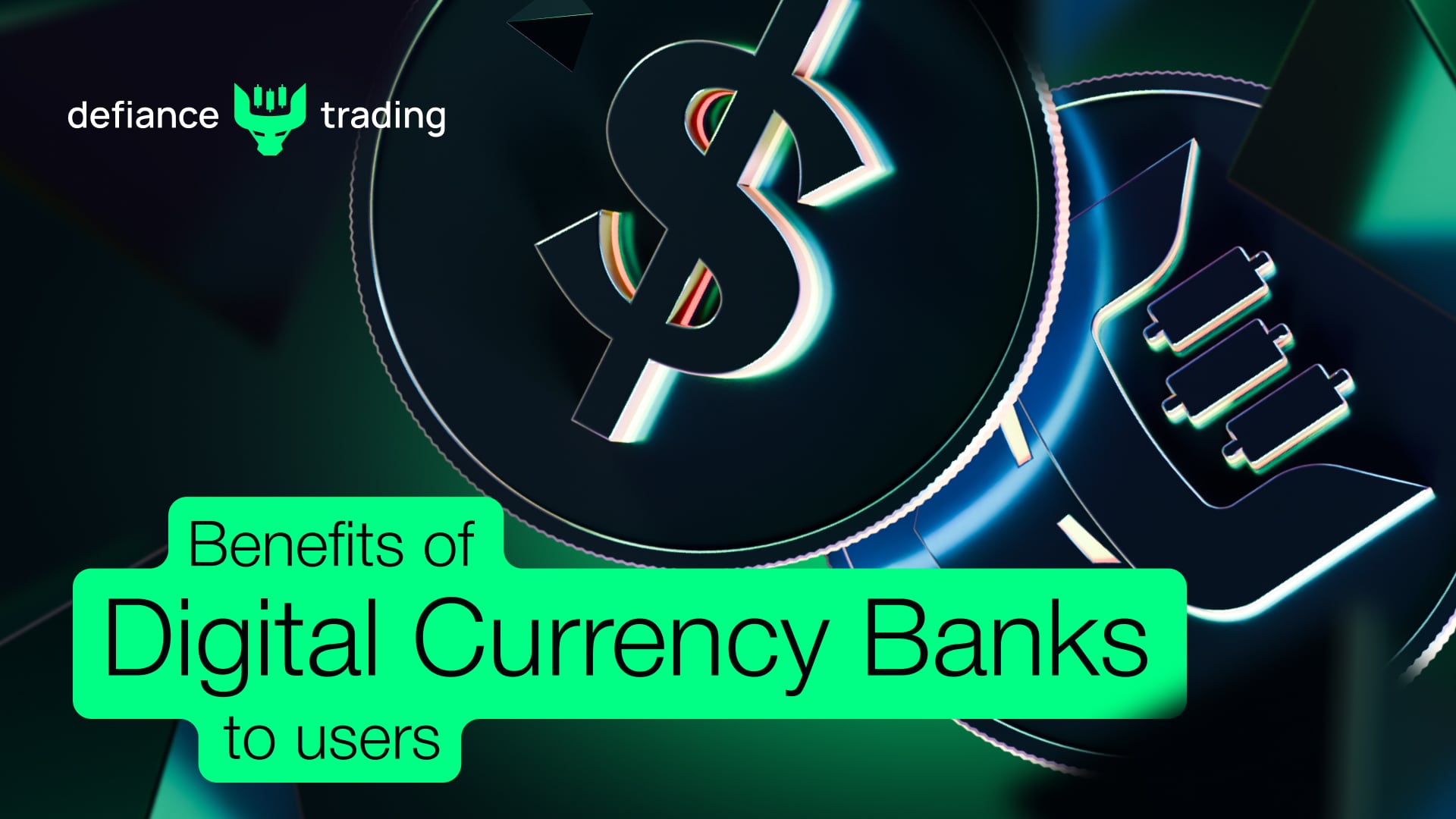What are The Benefits of Digital Currency Banks to Users?

Did you know there was once a crypto bank? Silvergate bank set out as a loans and savings association. In 1996, it morphed into a bank with few branches in San Diego, U.S.A. Fast forward to 2013, Silvergate CEO Alan Lane invested in Bitcoin. This action will gear the company to serve cryptocurrency users three years later. It offered real-time payments with a platform named Silvergate Exchange Network to help exchanges and individuals convert cryptocurrencies to fiat including U.S. dollars and euros. At the time, this was one of the benefits of digital currency banks to users.
While Silvergate existed, it attained some milestones like bringing onboard over 1000 exchanges and Institutional investors, attempting a stablecoin launch, and offering an IPO that rose by 1580% in 2 years. By 2022, Silvergate got caught in the FTX collapse and had to file for Chapter 11 bankruptcy in 2024.
The push for digital currency banks continues. In this article, we will explore what digital currency banks resemble, currency they deal in, how they can benefit users, and an example of a company looking to launch a cryptocurrency bank.
Let’s dive in!
What are digital currency banks?
A digital currency bank is an institution that oversees transactions in digital assets. These assets include Bitcoin, Ethereum , other Altcoins, and stablecoins. In recent years, a unique tender has joined the group Central Bank Digital Currencies. The existence of these currencies depend on the prerogative of the nation’s central bank.
To understand the context of digital currency banks, here is how they can function:
- Banks that store and offer cryptocurrency solutions alongside fiat currencies.
- Crypto-native banks/ neo banks
- Exchanges that fiction like banks because they offer wallets, transaction cards, and on/off ramping services
What currencies do these banks deal in?
Central Bank Digital Currencies (CBDCs)
CBDC is the digital currency monitored by a country’s central bank. It is similar to cryptocurrencies but they don’t suffer volatility since they are tied to the nation’s fiat value. This legal tender has no backing with physical assets. Many countries are eyeing prospects of digitalizing their currencies, making financial services accessible to everyone. In the U.S. , about 6% of the population don’t own a bank account. CBDCs will give households controlled and secure currency to spend. It will facilitate cross border transactions and reduce the costs associated with spending. Also, businesses can transact with transparency, privacy and convenience. Trading becomes seamless.
Stablecoins
There’s hardly anything hotter than stable coins in 2025. Virtually all legislations set to bring clarity to cryptocurrencies tend to this subset. One of such legislation is the GENIUS Act. This bill mandates issuers to hold one to one reserves and take strict anti money laundering measures. Stablecoins major appeal is safety, from the volatility in dealing with cryptocurrencies. Stablecoin issuers reserve 1:1 of your money’s worth. This means if you hold 1 USDC, you can redeem it for $1.
Not only can users trust this store of value that is similar to buying the dollar but they can also transact without traditional finance problems. Right now, the stablecoin market is worth more than $ 250 billion. Experts estimate it will grow to around $1.7 trillion by 2030. This great potential for growth is not lost on Donald Trump Jr, whose company World Liberty Financial has launched a novel stablecoin USD1.
Altcoins
Aside from the first two big guns Bitcoin and Ethereum, top contenders like Solana are emerging. Banks can offer to hold and trade in a variety of cryptocurrencies.
The benefits of digital currency banks to users
So what can the existence of digital currency banks do for users? Here are ways through which they can assist merchants, individual investors, and the entire ecosystem.
Financial inclusion
Existing banking infrastructure cripples a huge population of people with transaction costs. That’s why some people avoid keeping their money with institutions, shutting themselves out of the true power of digital finance. A digital currency bank caters to the unserved and undeserved to reduce the cost of spending receiving money for individuals and merchants. Even when some people are brought into the Institutional fold, network connectivity is another angle to look at. With digital currency, there’s a possibility of finding offline payment solutions. It can also create accessibility for people living with disabilities.
Another way to view inclusion is consumer autonomy in how their information is shared. In a digital currency banking system, customer consent becomes the key to view anyone’s financial history to view credit health and financial standing. This operation will help institutions tailor banking products towards the needs of their customers, and prevent unauthorized access to data.
Cheaper and faster transactions
Usual payment routes cost more and take time. Money changes hands over three or more parties, with each party taking a cut for processing fees. This time taken also slows transactions and dampens the pace of business. With a stablecoin bank, you can complete payments in mere minutes with absolute liquidity. The payment route is from sender to receiver so no intermediaries to mess up your calculations.
Creating an interoperable banking system
Digital currency policies can bring banks into close quarters like never before. It is possible for all banks to use a unified ledger to trade CBDCs, tokenized assets, and tokenized deposits with ease. In 2024, the Hong Kong Monetary Authority launched the Project Ensemble to assess tokenized asset transactions. The Sandbox will test tokenized deposit platforms for performance in payment settlement across supply chain, green ventures, and liquidity management.
Integration with emerging technologies
When there are banks dealing in digital currencies, financing involves a more automated process. CBDCs can implement distributed ledger technology to complete faster transactions to the right quarters. Programmable wallets and smart contracts are intuitive tools that support typical manual corporate operations to up the tempo at which business is done. These additions bridge the gap between fintechs and banks, making the latter more competitive because of existing huge deposits and regulatory backing.
Improved transparency
Digital means footprints follow every step. The creation of cbdc will allow authorities to track down illicit activities like money laundering and terrorism. It also helps to track down perpetrators of fraud to bring respite for victims. Digital currency banking systems preserve users identity and minimize data exposure to what’s necessary. The level of anonymity can decrease with higher stakes and fraudulent suspicions. This arrangement births clear legal frameworks that dictate measures for consumers and institutions.
Conclusion
Digital assets are blazing trails and dictating moves in finance. There are tokenized bonds and assets. Crypto companies are taking positions in the S&P 500. ETFs center around native tokens. The next step is banks so that crypto institutions can control their own reserves and make payment settlements in real time. Regulation is taking shape everyday and it’s unlikely the Silvergate collapse will repeat itself.
Digital currency banks will serve the unserved and undeserved, facilitate low cost transactions, create a link between crypto infrastructure. The big question is, are we about to see a resurgence for digital currency banks?
Visit our WEBSITE today, for more insights!
Ready to Defy the Odds?
Become part of a growing movement
